|
#1
| |||
| |||
|
Can you please provide me the ICAR Examination Syllabus for Veterinary Science Subject???? As you are looking for the syllabus of Veterinary Science of ICAR Examination so here I am providing the same VETERINARY ANATOMY AND HISTOLOGY Course Contents VAN 601 COMPARATIVE OSTEOLOGY AND ARTHROLOGY 1+2 Objective To make a student well versed with the bones and joints of different domestic animals. Theory UNIT I Technical terms, structure, chemical composition and classification of bones. UNIT II Bones of appendicular skeleton of ox as a type and their comparison with those of horse, dog, pig and poultry. UNIT III Bones of axial skeleton of ox as a type and their comparison with those of horse, dog, pig and poultry. UNIT IV Classification and detailed study of different joints of the body. UNIT V Study the various indices for estimating race, sex and age of different animals. Basics of biomechanics of the locomotor system. Radiography of normal and developing bones. Practical Demonstration of all bones and dissection of joints of buffalo/Cattle. COMPARATIVE SPLANCHNOLOGY 2+2 Objective To give a detailed overview of different systems constituting splanchnology. Theory UNIT I Descriptive anatomy of various organs of digestive system and associated glands of ox and their comparison with those of horse, dog, pig and poultry. Study of formation of thoracic, abdominal and pelvic cavities; reflection of these cavities. UNIT II Study of various organs/structures and associated glands constituting the respiratory system of ox and their comparison with those of horse, dog, pig and poultry UNIT III Detailed study of organs and associated glands comprising the urinary system of ox as a type and their comparison with those of horse, dog, pig and poultry. UNIT IV Complete study of various organs and associated glands of male and female genital systems. UNIT V Surgical sites for various operations and clinically significant areas for performing auscultation, percussion and for carrying out surgical procedures such as laryngotomy, oesophagotomy, gastrotomy, rumenotomy, cystotomy, urethrotomy, caesarian section, exploratory laparotomy, mammectomy, thoracotomy, thoracocentesis etc. Practical Demonstration of structure and placement of organs in body cavities of all the animals ICAR Examination Veterinary Science syllabus 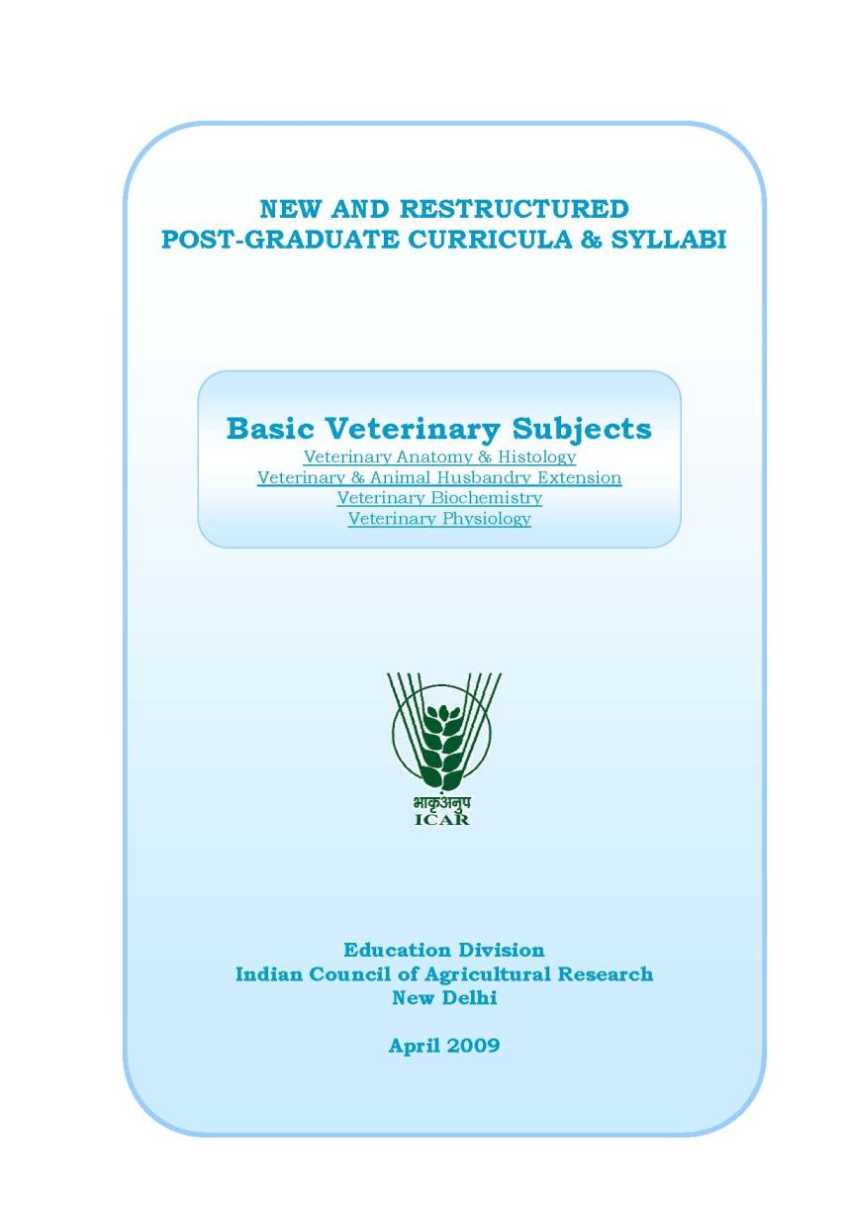 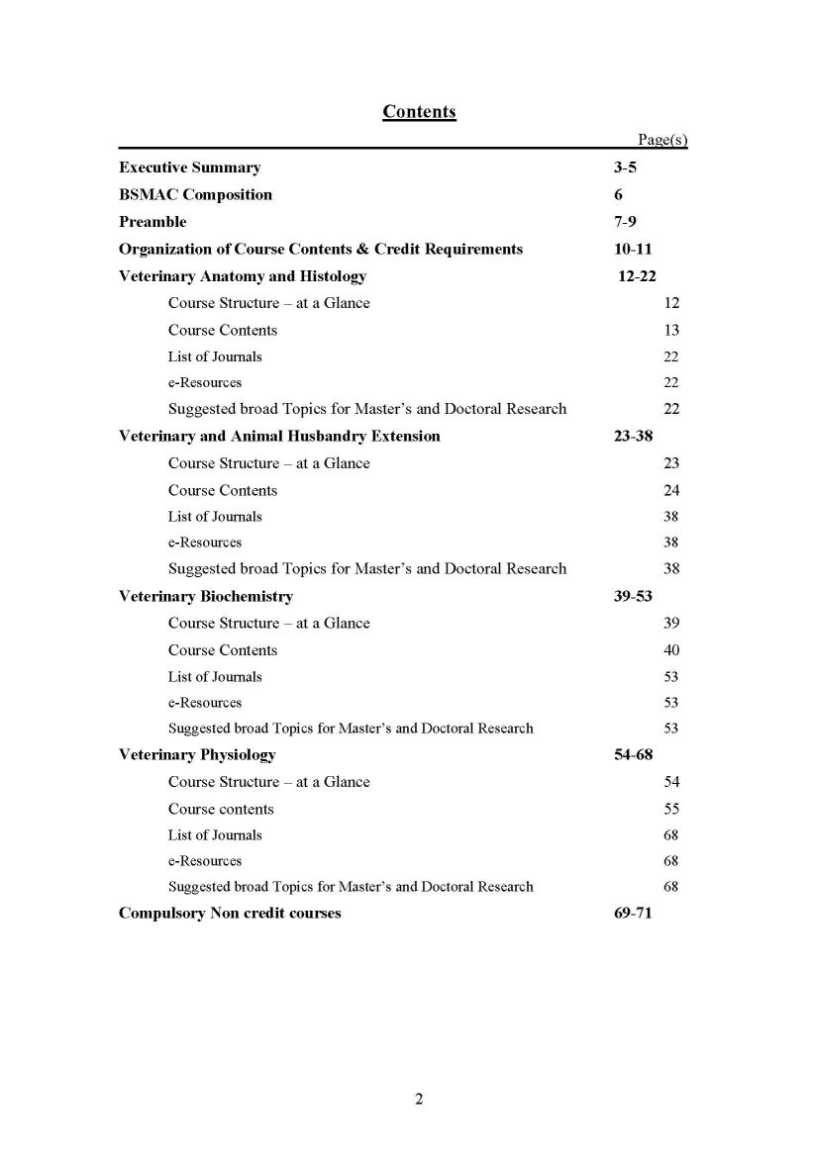 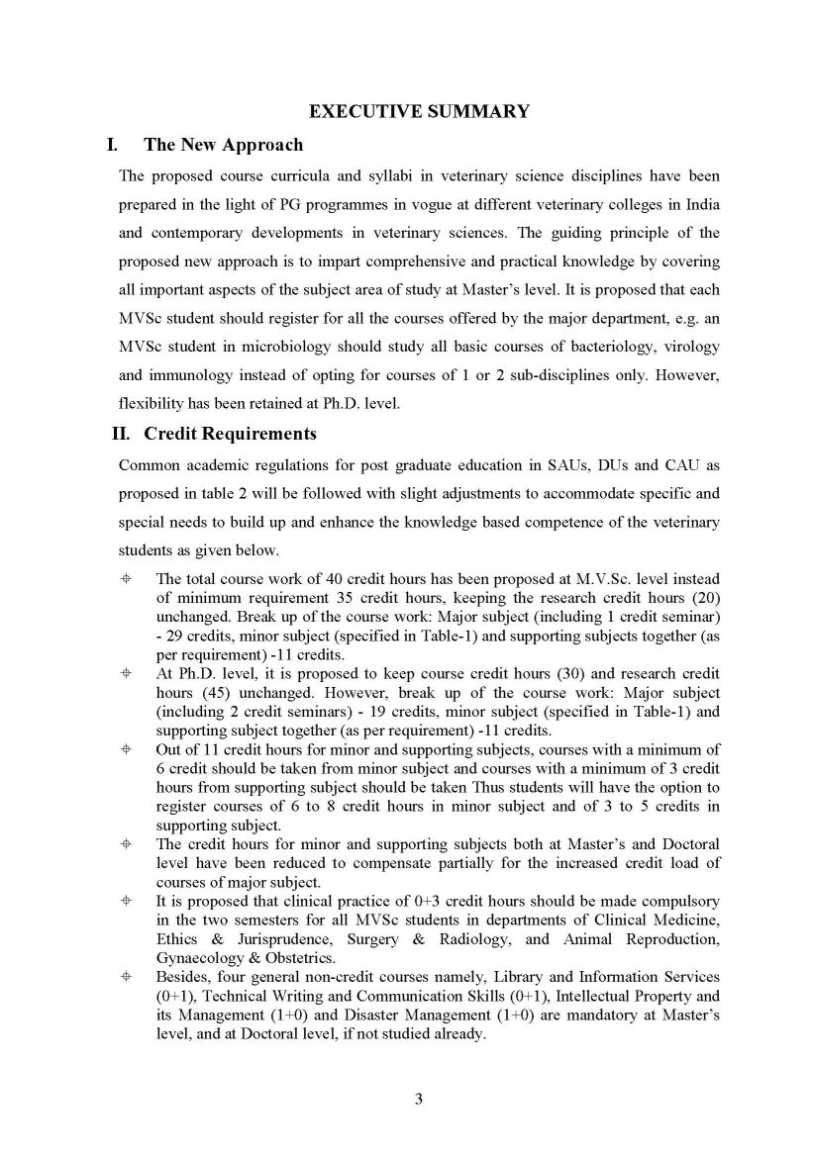 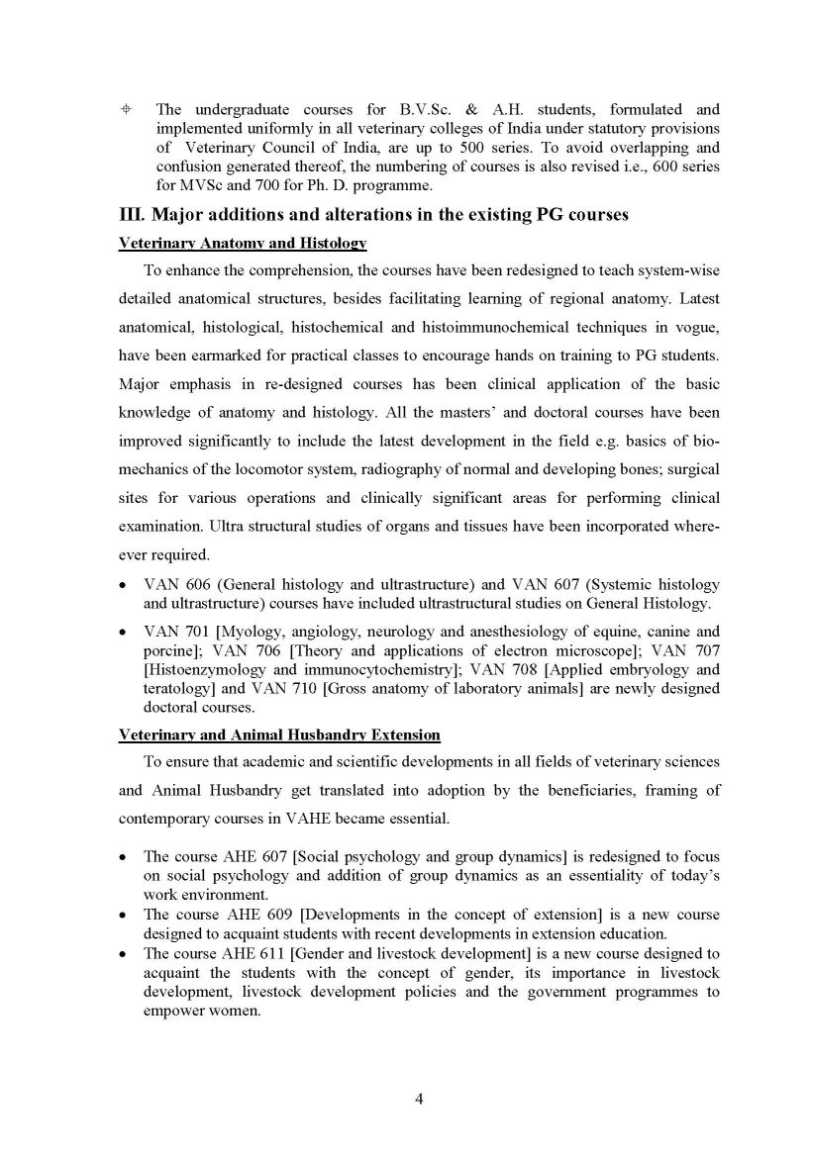 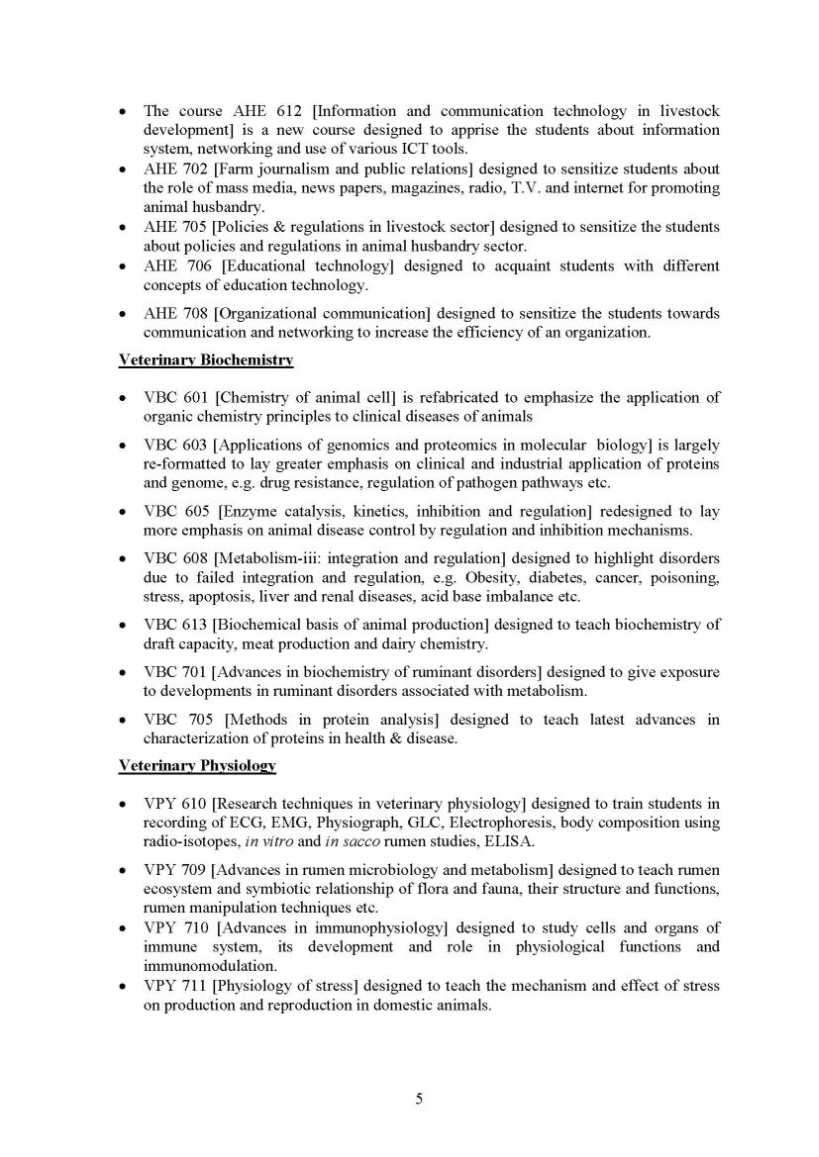 For complete syllabus here is the attachment of it......................... Last edited by Aakashd; May 24th, 2019 at 02:13 PM. |
|
#2
| |||
| |||
|
Indian Council of Agricultural Research (ICAR) All India Entrance Examination for Admission (ICAR AIEEA) is taken by Indian Council of Agricultural Research (ICAR) New Delhi for admission to Bachelor Degree and Master Degree. This examination does not include admission to Bachelor degree programmes in Veterinary Sciences. It provides admission to Master degree programmes in Veterinary Sciences. So for Master degree programmes in Veterinary Sciences one need to appear in ICAR AIEEA PG Entrance Test ICAR AIEEA PG Entrance Test Syllabus Code 01 : MAJOR SUBJECT GROUP – PLANT BIOTECHNOLOGY ( Subjects : 1.1 : Plant Biochemistry / Bio. Chem. 1.2 : Plant Biotechnology & Molecular Biology / Biotechnology, 1.3 : Plant Physiology / Crop Physiology ) UNIT – I : Basic Sciences & General Agriculture Importance of agriculture in national economy; basic principles of crop production; cultivation of rice, wheat, chickpea, pigeon – pea, sugarcane, groundnut, tomato, and mango. Major soils of India; role of NPK and their deficiency symptoms. General structure and function of cell organelles; mitosis and meiosis; Mendelian genetics. Elementary knowledge of growth, development, photosynthesis, respiration and transpiration; Elements of economic botany. General structure and function of carbohydrates, proteins, nucleic acids, enzymes and vitamins. Major pests and diseases of rice, wheat, cotton, chickpea, sugarcane and their management. Organic farming; biofertilizers; biopesticides. Recombinant DNA technology; transgenic crops. Important rural development programs in India; organizational set up of agricultural research, education and extension in India. Elements of statistics. UNIT – II : Plant Biochemistry Importance of biochemistry in agriculture. Acid – base concept and buffers; pH. Classification, structure and metabolic functions of carbohydrates, lipids and proteins. Structure and function of nucleic acids. Enzymes : structure, nomenclature, mechanism of action; vitamins and minerals as coenzymes and cofactors. Metabolic pathways : glycolysis, TCA cycle, fatty acid oxidation, triglyceride biosynthesis. Electron transport chain; ATP formation. Photosynthesis : C – 3, C – 4 and CAM pathways. Nitrate assimilation; biological nitrogen fixation. Colorimetric and chromatographic techniques. UNIT – III : Plant Biotechnology and Molecular Biology / Biotechnology Characteristics of prokaryotic and eukaryotic organisms; differences between fungi, bacteria, mycoplasms and viruses. Physical and chemical basis of heredity; chromosome structure. DNA replication, transcription and translation; genetic code; operon concept. Genetic engineering; restriction enzymes; vectors; gene cloning; gene transfer. Plant cell and tissue culture; micro – propagation; somaclonal variation. Transformation; recombination; Heterosis. General application of biotechnology. Molecular and immunological techniques. Concept of bioinformatics, genomics and proteomics. UNIT – IV : Plant Physiology / Crop Physiology Plant physiology – importance in agriculture. Seed germination, viability and vigour. Photosynthesis – significance of C – 3, C – 4 and CAM pathway; photorespiration and its implications. Translocation of assimilates; dry matter partitioning; Harvest index of crops. Growth and development; growth analysis; crop – water relationship. Plant nutrients and their functions. Phytohormones and their physiological role. Photo – periodism, vernalisation; pollination / fertilization in flowering plants. Post – harvest physiology and its significance. Code 02 : MAJOR SUBJECT GROUP – PLANT SCIENCES ( Subjects : 2.1: Plant Breeding & Genetics, 2.2: Plant Pathology, 2.3: Agricultural Microbiology / Microbiology, 2.4: Seed Science & Technology, 2.5 : Plant Genetic Resources ) UNIT – I : Importance of Agriculture in national economy; basic principles of crop production; cultivation of rice, wheat, chickpea, pigeon – pea, sugarcane, groundnut, tomato, potato and mango. Major soils of India, role of NPK and their deficiency symptoms. UNIT – II : Structure and function of cell organelles; mitosis and meiosis; Mendelian genetics; elementary knowledge of photosynthesis; respiration, and transpiration; structure and functions of carbohydrates, proteins, nucleic acids, enzymes and vitamins. Major pests and diseases of rice, wheat, cotton, chickpea, sugarcane and their management. UNIT – III : Characteristics of prokaryotic and eukaryotic organisms, differences between fungi, bacteria, mycoplasmas and viruses; physical and chemical basis of heredity; chromosome structure; genes / operon concept; protein biosynthesis; transformation, recombination, Heterosis; Elements of economic botany; integrated diseases management; sterilisation, disinfection and pasteurization; Koch’s postulates; aetiological agents of rusts, smuts, powdery / downy mildews, wilts, yellows, mosaic, necrosis, enations, blights and witchesbroom; pH, buffer, vitamins, role of plant hormones in seed germination and dormancy; pollination / fertilization in flowering plants; methods of seed testing; breeders, foundation and certified seeds; seed production in self and cross pollinated crops, nitrate assimilation; biological nitrogen fixation and other uses of microorganisms in agriculture. UNIT – IV : Food and industry; composting and biogas production. Important rural development programs in India; organizational set up of agricultural research, education and extension in India. Rest of the Syllabus is attached in below file which is free of cost Address: Deputy Director General ( Education ), Indian Council of Agricultural Research, Krishi Anusandhan Bhavan – ll, Pusa, New Delhi – 110 012, Telehone No. : 011 – 25843392, Fax No. : 011 – 25840746,
__________________ Answered By StudyChaCha Member |